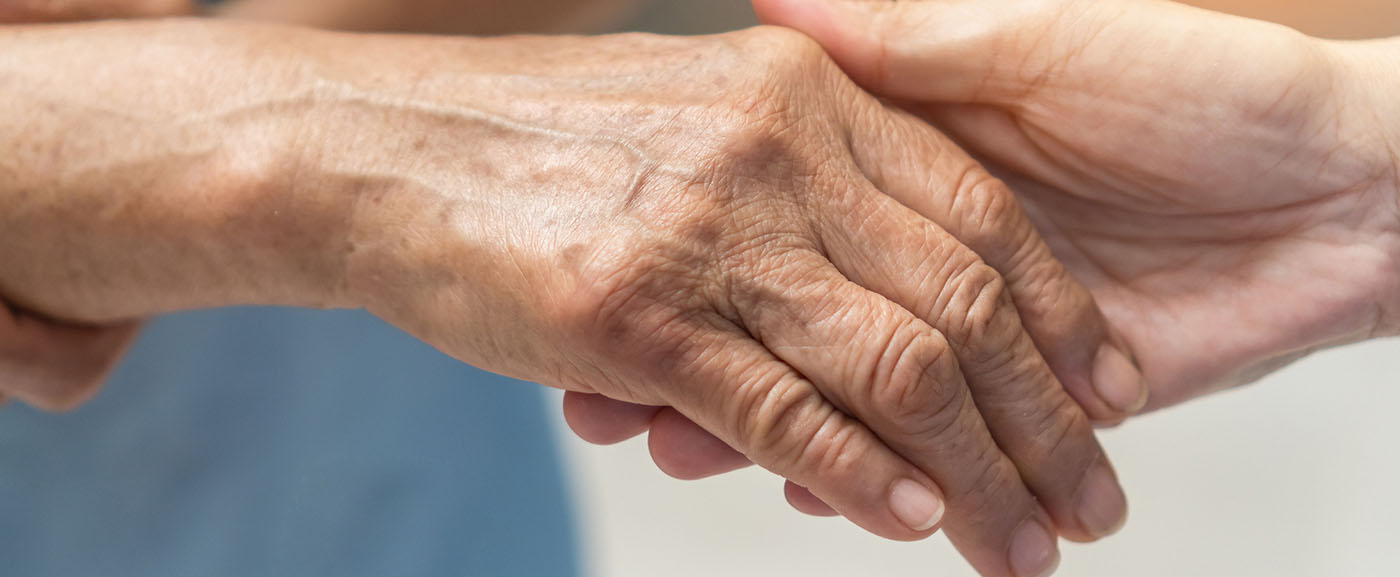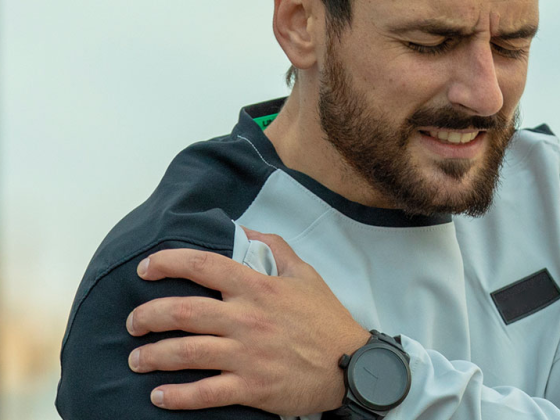A 64-year-old Parkinson’s disease patient developed massive effect fluctuations and severe worsening of symptoms under conventional therapy. Only the use of a continuous intrajejunal dopaminergic stimulation by pump therapy led to a significant improvement of the clinical picture.
Severe deterioration after conventional drug therapy has been exhausted.
The patient, now 64 years old, had been suffering from idiopathic Parkinson’s syndrome (last stage 3 according to Hoehn and Yahr) since 2005. Repeated adjustments of oral and transdermal dopaminergic medication in combination with physiotherapy and occupational therapy enabled satisfactory symptom control over many years, which allowed the patient to pursue her sporting interests, such as hiking, skiing, and cycling.
In 2011, there was progressive deterioration of gait, fluctuating leg-emphasized cramping muscle pain, a marked decrease in performance, and significant psychological impairment, with depressive episodes, emotional lability, and increased susceptibility to stress. In 2013, inpatient optimization of drug therapy and intensification of rehabilitative measures took place. Among other things, the patient regularly performed the Parkinson’s-specific voice exercises “LSVT LOUD” and a movement therapy “LSVT BIG”.
In the summer of 2020, due to progressive disease with increasing impairment of everyday life, a renewed inpatient rehabilitation took place. Despite intensive therapy, paroxysmal hypokinetic phases with dystonic muscle spasms occurred several times daily. Gait disturbances with freezing and incipient camptocormia were evident. Choreatiform dyskinesias occurred during periods of less restricted mobility. There were complaints of dizziness due to orthostatic dysregulation.
Switching the medication from Stalevo® to Madopar®, which was administered every three hours, while simultaneously passing dopamine agonists (Sifrol®/ER and Neupro® Matrix patches) partially reduced the dyskinesias, but the frequency of off-phases did not improve significantly. The patient was now also severely impaired by the mental symptoms, and visual hallucinations occurred more frequently. Given the exhausted options of conventional pharmacotherapy, deep brain stimulation or pump therapy with Duodopa® or apomorphine were recommended to the patient as medium-term therapy escalation. After consultation with her treating neurologist, the patient decided to undergo therapy with the Duodopa® pump(Box 1).
|
Box 1: Mechanism of action of Duodopa Duodopa® is a combination of levodopa, which is converted by the body into dopamine, and carbidopa, which inhibits the metabolization of levodopa and thus supports its action. Continuous intrajejunal infusion of carbidopa/levodopa gel aims to avoid plasma level fluctuations of levodopa, which may lead to a significant reduction in on-off fluctuations. For this purpose, the active ingredients levodopa 20 mg/ml and carbidopa 5 mg/ml contained in a Duodopa® cassette are infused to the resorption site (upper jejunum, just below Treitz’s ligament) via an extracorporeally worn electronic pump and a JET-PEG catheter system in gel form. Thus, the long transport time of orally ingested levodopa from the stomach to the resorption site in the jejunum is bypassed, which significantly shortens the onset of levodopa action. |
Careful preparation of pump therapy
The inpatient stay at the end of 2020 served to establish Duodopa® therapy. At baseline, neurological examination with Parkinson’s disease scoring (MDS UPDRS III (in ON), MDS UPDRS IV, MOCA test, GDS), body weight measurement, and laboratory testing of inflammatory parameters, coagulation levels, serum vitamin B6/12, folic acid, and holotranscobalamin were performed.
The morning dose, if any, and the continuous flow rate of Duodopa® as the levodopa equivalent daily dose were calculated from the sum of the total dose of oral levodopa plus the levodopa equivalent dose of the dopamine agonists taken.
On the first day after hospital admission, initial dopaminergic medication was suspended(Box 2). Only the single dose of Madopar® LIQ in the early morning was maintained to avoid akinesia with possible intestinal atony. In the fasting state, endoscopic placement of a temporary nasojenunal probe was then performed to conduct the test and titration phase. Two hours after insertion of this tube, the patient was allowed to eat and drink again.
| Box 2: Pharmacotherapy before the Duodopa ® -pump
|
Usually , as in this patient, intrajejunal levodopa/carbidopa gel infusion (LCIG) is used as monotherapy during waking hours over 16 hours. At night, levodopa/carbidopa is administered orally, as a tablet.
In addition, Duodopa® therapy was combined with the sustained-release dopamine agonist pramipexole (Sifrol®/-ER) on an experimental basis(Box 3) to avoid the need to change the levodopa/carbidopa cassette twice daily, which would have been necessary given the patient’s high levodopa requirement. Alternatively, there was the possibility of extending the Duodopa® infusion to the night and administering it as monotherapy at best. The effectiveness of the therapy was closely monitored over the following five days using an exercise protocol. Dose adjustments were sometimes made several times a day.
| Box 3: Pharmacotherapy with the Duodopa® pump
|
Significant improvement of motor and psychological symptoms
Once a subjectively and objectively satisfactory therapeutic effect was established, the placement of the permanent JET-PEG probe could be performed. The next day, feeding was possible again, and with daily dressing changes, the PEG stoma remained irritation-free.
During the remainder of the hospital stay, off-phases and leg cramps no longer occurred. The dyskinesias decreased significantly and occurred only rarely and mainly during emotional stress in a very mild form. Axial symptoms such as freezing on walking and camptocormia regressed. The patient reported a sustained improvement in sleep quality and mood. Hallucinations were absent.
The patient and her husband were instructed on how to use the pump and probe system, specifically how to turn the pump on and off, how to change cassettes, how to flush the probes, potential complications of Duodopa® therapy, and how to administer an extra dose if off-phase occurs. The patient passport provided includes emergency oral medication in case of pump failure or tube blockage.
Present situation after hospitalization
Three months after leaving the clinic, the patient reported via e-mail that she was very satisfied with the outcome of the therapy. An attached video showing her snowshoeing demonstrates that the patient can now resume her hobbies.
Box 4: Recommendation for follow-up care
|
Case report provided by

Helene Lisitchkina, M.D.
Head senior physician
Bethesda Clinic
Neurorehabilitation, Parkinson’s center, epileptology
Tschugg
This text was produced with the financial support of AbbVie AG, Cham.
CH-DUOD-210072_05/2021
Summary of product information Duodopa®
Article online since 14.06.2021














